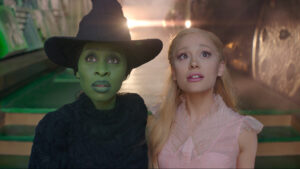TGC reviews media that is not suitable for everyone. To help readers make wise viewing decisions, we recommend reading “Should I Watch This?” and checking out a content guide.
There are plenty of similarities between movie characters Buzz Lightyear and Captain Pete “Maverick” Mitchell. Both are talented test pilots with a penchant for going rogue and taking risks—even when bosses and protocols order them to play it safer. Both prefer analog know-how (human instincts) over machine intelligence (especially the dreaded autopilot). Both are brave, duty-bound men willing to risk their lives to accomplish the mission they’ve been given—even if the way they go about it makes their superiors mad.
Both feel the need for speed. Within the first few minutes of their respective movies—Lightyear and Top Gun: Maverick—the iconic pilots break speed records. Both Maverick and Buzz are a little bit cocky, and yet both value the importance of teamwork and pushing those they lead to be the best they can be. There’s a lot to like in both men. They’re not perfect, but they’re heroic and inspiring.
Yet for all these similarities, the two summer blockbusters that bear their names could not be more different. And the differences between Maverick and Lightyear reveal subtle but important cultural divisions in how we view the past, the future, and the nature of progress.
‘Lightyear’: Speeding Toward New Morals
Though a spinoff from the 1995 classic Toy Story, Lightyear is a far cry from that groundbreaking film—in almost every way. Where the original Toy Story was a wide-eyed marvel of artistry and enchanting storytelling, Lightyear is overstuffed and uninspired. And where Toy Story celebrated childhood as childhood, even leading adult viewers to feel like kids again, Lightyear does the opposite—pushing childhood into adulthood in inappropriate ways.
Within Lightyear’s first 20 minutes, we find out that Buzz’s space ranger partner, Alisha Hawthorne (Uzo Aduba), is a lesbian who gets engaged to and marries a woman. The ensuing lesbian kiss has rightly generated concern among parents and religious conservatives—leading to the film being banned in nations like Saudi Arabia, the UAE., Malaysia, and Kuwait. But the kiss is only one problematic part of a larger montage that shows the lesbian couple progressing through life stages—including marriage, pregnancy, child-rearing, and beyond—in a manner similar to the opening sequence of Up. Make no mistake: the decision to depict a same-sex couple in this Up-style “married life” montage is an intentional attempt to normalize LGBT+ relationships as just as wholesome and natural as the married couple in Up. “Love is love,” we’re told.
The decision to depict a same-sex couple in this Up-style ‘married life’ montage is an intentional attempt to normalize LGBT+ relationships as just as wholesome and natural as the married couple in Up.
In a film featuring robot cats and predatory alien plant life, it’s telling that the most outlandish plot point in Lightyear is the framing that opens the film and ties it to 1995’s Toy Story. We’re told Toy Story’s Andy received a Buzz Lightyear toy inspired by a film released in 1995. Lightyear is that film, supposedly. But let’s be real. A film like Lightyear could never have been made in 1995. The world has changed dramatically in 27 years, and while a same-sex kiss in a kid’s movie might seem justifiable in 2022 (in Disney’s mind at least), it would never have flown in 1995. This normalization of what was for most of human history considered abnormal has been swift and sweeping.
To be sure, the lesbian subplot is not the focal point of Lightyear; but neither is it an insignificant part. By casually weaving homosexuality into the arc of one of the film’s heroines (perhaps the most sympathetic character), the film suggests that “gay” is normal and good—simply a neutral attribute assigned to one of the characters, just as some characters are tall and others are short, and some sport Kiwi accents and others don’t. But this subtlety, framing it as demographic “representation” without any moral dimension, is what makes it so insidious.
Progressives act like it’s absurd and irrational for parents to be concerned about this queer “representation” in a Disney kids movie. Chris Evans, who takes over the voice of Lightyear from Tim Allen, has said that those who find the gay plot problematic are “idiots” who are “afraid and unaware” and will “die off like dinosaurs.” Essentially admitting that becoming “woke” is the primary value at play in Lightyear, Evans said in the same interview that “what makes us good” is “social advancement as we wake up . . . constant social awakening.”
Is this really what makes us good? Are parents and conservatives bigoted and delusional for wanting their kids to be morally formed in history, tradition, old Christian wisdom, and ideals that haven’t changed—as opposed to rapidly changing mores and “constant social awakening”? Is virtue reliable when it’s pitched as something so fluid, changing dramatically from decade to decade?
No. As a parent, you’re not off base to be concerned about how this “new world” of social awakening is forming your child’s moral imagination. And so if you opt not to take your child to see Lightyear, you’re not a dinosaur.
‘Maverick’: Speeding Back to Go Forward
If Lightyear favors woke over wonder, Maverick favors wonder over woke. If Lightyear plunges kids into adult issues, Maverick leads adults to feel like kids again—dreaming big dreams and embracing the “thrill ride” marvel of the movies as a good unto itself. If Lightyear complicates the “hero who saves the day” trope (Buzz: “I won’t be able to save you.” Izzy: “You don’t need to save us. You need to join us.”), Maverick embraces save-the-day heroism with old-school simplicity and thrilling derring-do. Is it at all surprising that Lightyear has underperformed at the box office while Maverick has become the year’s biggest hit?
If Lightyear favors woke over wonder, Maverick favors wonder over woke.
The only barrier Maverick is breaking is the speed of sound. It’s not a film attempting to break new representational ground or advance some vanguard moral agenda. Rather, Maverick’s boldest message is that it doesn’t have a bold message. Yet in an era when everything from military-issued bullets to the Burger King Whopper must become vehicles for Important Social Messages, Maverick’s refusal to preach is radical. More radical still is Maverick’s conviction that the best way forward involves backward-looking retrieval: honoring the past rather than discarding it; seeing value in some measure of traditionalism rather than constant iconoclasm.
Though certainly driven by a hefty dose of 80s nostalgia and the lucrative prospects of rebooting a treasured franchise, Maverick’s fidelity to the past goes deeper than dollar signs. This is a film where generational commitments matter and institutional continuity is valued. It dares to assert that not all that is old should be discarded, and not all that is new should be embraced. When Maverick (Tom Cruise) is told, “Your kind is heading to extinction,” his reply is defiant: “Maybe so, sir, but not today.”
Maverick dares to assert that not all that is old should be discarded, and not all that is new should be embraced.
Certainly not everything in Maverick is morally laudable—just as not all “traditional” values are morally valuable (if they’re not biblical). But whereas films like Lightyear view progress as “constant social awakening,” films like Maverick see progress as social remembering. This is not a posture that sanctifies the past or views it with rose-colored glasses, as if every antecedent is automatically virtuous. It’s not uncritical of the past, but it’s humbly appreciative of it—recognizing that the surer path to moral wisdom is a thoughtful excavation of the imperfect past more than a trailblazing path into the unproven future.
Good Pilots Can Be in Bad Planes
In Maverick, the titular character says at one point, “It’s not the plane; it’s the pilot.”
As pilots, Maverick Mitchell and Buzz Lightyear model similar values that are worth emulating. But their respective vehicles—the films in which they reside—are flying in vastly different directions.
Whereas films like Lightyear view progress as ‘constant social awakening,’ films like Maverick see progress as social remembering.
While one speeds confidently toward the past, in hopes of recovering virtues we’ll need for the future, the other heads at warp speed into uncharted territory. Ironically for the franchise that launched the catchphrase, “I feel the need—the need for speed,” Top Gun: Maverick suggests there’s wisdom in putting on the brakes, rather than careening recklessly forward without a plan or a map. Lightyear, on the other hand, sees its mission only in the forward sense: “To infinity and beyond.” Emphasis on beyond.
What’s the “beyond” endpoint where the “constant social awakening” will take us? I don’t want to be on that plane to find out where it lands—and I don’t want my kids to be either. I’d rather take them on a journey of recovery: remembering the days of old and the generations past (Deut. 32:7), discovering and learning to love the agelessness of God’s truth rather than delighting in reinventing it for every passing age.
“The Most Practical and Engaging Book on Christian Living Apart from the Bible”
 “If you’re going to read just one book on Christian living and how the gospel can be applied in your life, let this be your book.”—Elisa dos Santos, Amazon reviewer.
“If you’re going to read just one book on Christian living and how the gospel can be applied in your life, let this be your book.”—Elisa dos Santos, Amazon reviewer.
In this book, seasoned church planter Jeff Vanderstelt argues that you need to become “gospel fluent”—to think about your life through the truth of the gospel and rehearse it to yourself and others.
We’re delighted to offer the Gospel Fluency: Speaking the Truths of Jesus into the Everyday Stuff of Life ebook (Crossway) to you for FREE today. Click this link to get instant access to a resource that will help you apply the gospel more confidently to every area of your life.

































